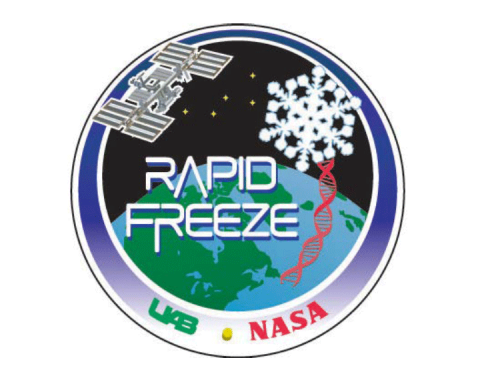
Results from transcriptomic analysis of liver tissues from the NASA Rodent Research-1 (RR-1) mission (GeneLab dataset GLDS-48) revealed that preservation method, not spaceflight, was the driving factor for gene expression changes among samples. Additionally, tissues processed from whole carcasses that were slow frozen at -80C had partially degraded transcripts, making it difficult to tease out which molecular pathways were altered by the space environment.
In response to these and other observations, the Rapid Freeze hardware, consisting of the Cryochiller and Glovebox freezer, was built by the University of Alabama at Birmingham for use on the International Space Station. The Rapid Freeze hardware reaches temperatures as low as -185°C, thereby freezing mouse tissues (Glovebox freezer) and whole carcasses (Cryochiller) at rates more closely mimicking those attained with immersion in liquid nitrogen.
To assess the ability of the Rapid Freeze system to preserve signals in gene expression data, the Rodent Research and GeneLab projects designed a ground study with three primary goals: 1) To evaluate the temperature profile of the Cryochiller and Glovebox freezer cartridges (Rapid Freeze hardware) over time during mock on-orbit procedures; 2) To determine the freezing profiles of tissues and carcasses using Rapid Freeze hardware at both optimal and sub-optimal temperatures (to mimic on-orbit operations), compared with those frozen in liquid nitrogen (the laboratory gold standard) or frozen at -80°C (the current standard method); and 3) To identify gene expression changes in a) tissues that were frozen via the Glovebox freezer and b) tissues dissected from whole or partial carcasses that were frozen via the Cryochiller versus tissues that were frozen via control methods (liquid nitrogen or -80°C slow freeze) to assess how the Rapid Freeze hardware compares with laboratory gold standard practices and our current standard methods.
GeneLab’s Sample Processing Lab recently completed sequencing of the three rodent tissues evaluated using the Rapid Freeze hardware - spleen, liver, and soleus muscle. These raw RNA sequence data are now available in the GeneLab Data Repository. Check out and download the following data:
GLDS-272: Transcriptional analysis of spleens from mice preserved with the Rapid Freeze hardware
GLDS-273: Transcriptional analysis of livers from mice preserved with the Rapid Freeze hardware
GLDS-274: Transcriptional analysis of soleus from mice preserved with the Rapid Freeze hardware
Questions? Contact GeneLab at: https://genelab.nasa.gov/help/contact

